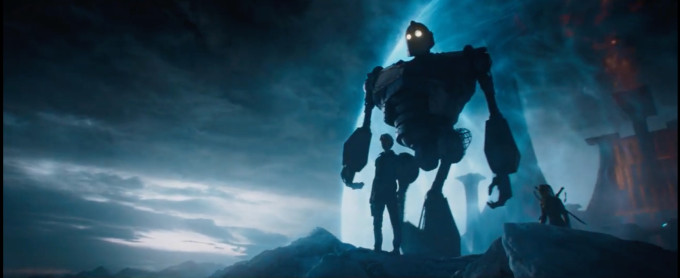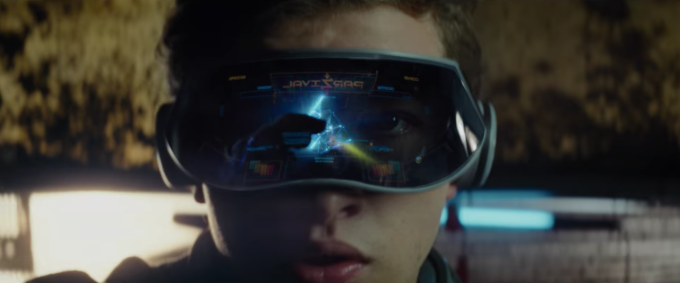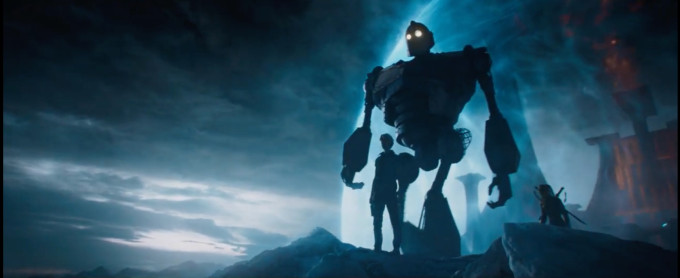First things first: I had a really good time watching Ready Player One. As promised, the movie feels like a chance for Steven Spielberg to return to his roots as a blockbuster filmmaker, and to take all the toys out of the box and smash them together.
The film is based on Ernest Cline’s bestselling novel, with a script by Cline and Zak Penn. It’s ostensibly set in Columbus, Ohio, 30 years in the future, in a world overwhelmed by climate change and overpopulation. But Ready Player One‘s real setting is the OASIS, an enormous virtual reality world.
The story’s hero is Wade Watts (played by Tye Sheridan), who spends most of his time in the OASIS, hoping to complete three challenges left behind by James Halliday, the technology’s inventor. Halliday has promised that the first person to complete the challenges will gain control of the OASIS.
The film’s central achievement is bringing this virtual world to life. Rather than aiming for a photo-real effect, Spielberg has embraced the OASIS’ essentially cartoony and video game-like qualities, and after a few minutes of acclimation, I had no problem jumping back-and-forth between the movie’s digital free-for-all and its live action dystopia.

It’s clear that the characters take what happens in the OASIS as seriously as anything in the “real world,” and that they see their virtual avatars as an extension or expression of their real selves, so I was happy to follow their lead.
And as Who Framed Roger Rabbit? and Wreck-it Ralph have already shown, there can be something exhilarating about seeing elements from classic films and video games thrown together. I genuinely felt like I was 10 years old again as I watched the first big set piece, with Wade racing through the streets of New York City in his Back to the Future-style DeLorean, dodging King Kong and the Tyrannosaurus from Jurassic Park.
But I also felt a rapidly growing sense of diminishing returns.
True, Spielberg and other directors of his generation have openly borrowed from old movies throughout their careers. Raiders of the Lost Ark and Star Wars were inspired by the pop culture that Spielberg and his friend George Lucas loved as kids, but those movies transformed what had come before into something new.

There’s nothing quite as magical here. At its worst, Ready Player One amounts to little more than a game of spot-the-reference. And even at its best, any excitement feels more like a rapidly fading sugar rush, not the indelible thrill of Spielberg’s best work.
He’s has been happy to talk about Ready Player One as a return to making movies “from the audience, for the audience,” but Spielberg’s also suggested that he has more on his mind than pure entertainment — that the film is meant to highlight some of the ways that the Internet and virtual reality could be used to isolate us, to distract from the world’s very real problems.
Some of that comes across in the film’s opening moments, when Wade climbs down a tower of rundown trailers. Inside each one, we can see that his neighbors are all hidden behind goggles, living in their own fantasies.
But despite a few pious nods towards the importance of the real world, the film doesn’t seem very interested in the flaws of the OASIS — or the dark side of the nostalgic fan culture that Wade embodies. Sure, Wade has a hard time to talking to girls, but it’s clear that when he confronts the film’s villain (a corporate executive who could never love John Hughes movies the way Wade does), we’re meant to see cheer him on as he declares, “A fanboy knows a hater.”
And while Mark Rylance delivers the film’s most compelling performance as Halliday, the script falls short. By portraying the most powerful technologist in the world as a lonely, awkward but ultimately benign and Willy Wonka-ish figure, it feels strangely out-of-sync with 2018, when everyone seems to be wrestling with the damage that these digital platforms may be doing.
And yet … I had a good time. I felt plenty of reservations as I left the theater, but I made my peace with them by accepting Ready Player One as the ultimate expression of geek nostalgia, with all the virtues and the limitations that implies.
I suspect Spielberg and Cline have taken us as far down the pop culture rabbit hole as any movie can go. Hopefully, other filmmakers will realize that, and they’ll look elsewhere for inspiration.


